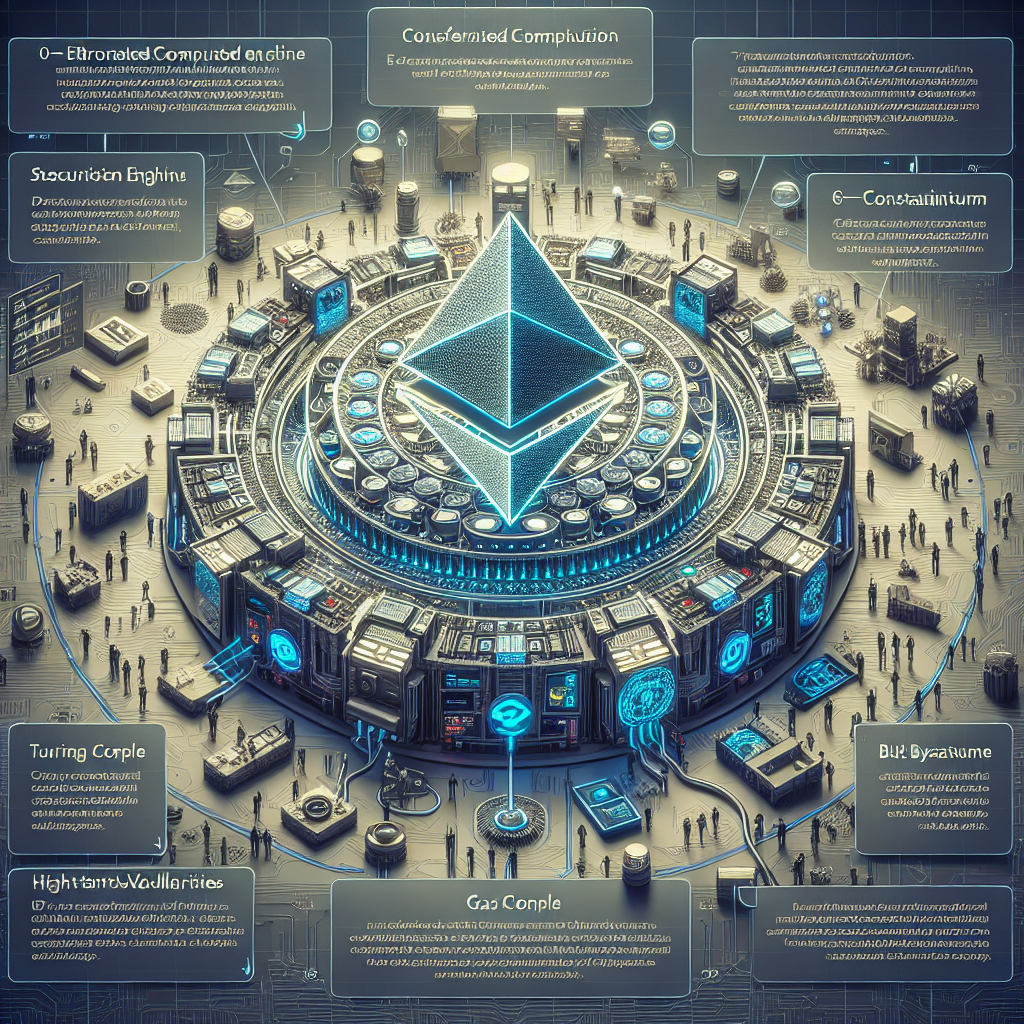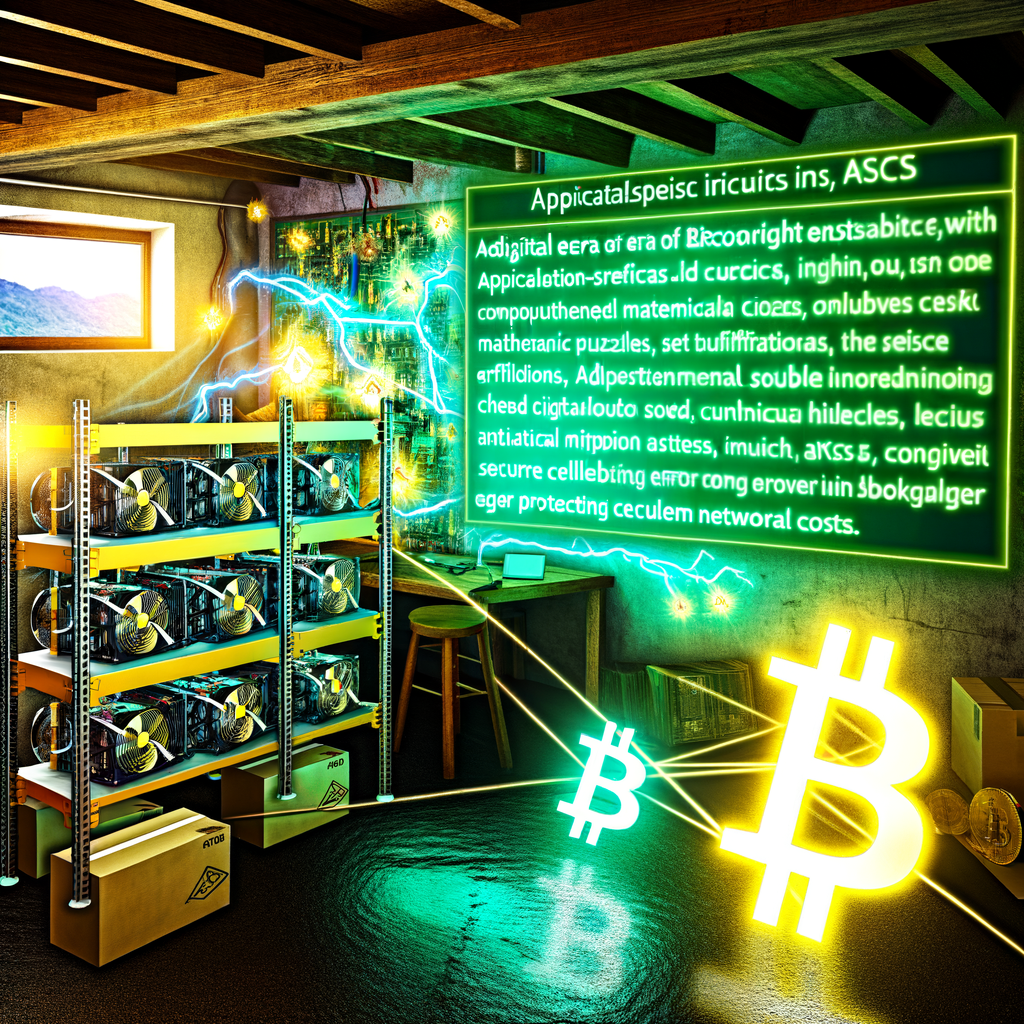The Ethereum Virtual Machine (EVM) stands at the core of Ethereum’s blockchain infrastructure, enabling the execution of smart contracts and decentralized applications (DApps). Over the years, the EVM has evolved to become the backbone of many blockchain ecosystems, providing a robust and versatile environment for developers. This article delves into the history, functionality, and features of the EVM, highlighting its critical role in the world of blockchain. We will also explore the EVM’s gas system, its benefits, challenges, and what the future holds for this transformative technology.
What is the Ethereum Virtual Machine (EVM)?
The Ethereum Virtual Machine (EVM) is a decentralized computation engine that allows Ethereum nodes to execute scripts using an international network of public nodes. It is responsible for running the code of decentralized applications and smart contracts, providing a secure and isolated environment for these operations. As the runtime environment for Ethereum, the EVM facilitates the deployment and execution of millions of decentralized applications by ensuring they operate consistently and securely. This virtual machine is Turing-complete, meaning it can perform any logical step that a standard computer can, given enough resources. The EVM achieves this by converting high-level contracts into bytecode, which the machine can execute, thereby enabling the functionality and automation of contractual agreements without intermediaries. In essence, the EVM turns Ethereum into a global computing platform, making it an indispensable component of the blockchain’s infrastructure.
History and Evolution of the Ethereum Virtual Machine
The Ethereum Virtual Machine (EVM) was conceptualized by Vitalik Buterin, the creator of Ethereum, as a way to execute decentralized applications through the blockchain. Launched in 2015 with the Frontier release, the EVM was designed to be a state machine that’s always consistent, enabling the execution of smart contracts. Initially, the EVM had limitations in terms of scalability and performance, but over time, numerous updates and improvements have been implemented.
One of the most significant upgrades was the Byzantium hard fork in 2017, which introduced several optimizations and new opcodes that enhanced the EVM’s efficiency and security. This was followed by the Constantinople and Istanbul forks, each bringing improvements in cost reduction for transactions and enhanced privacy features.
The EVM’s architecture has influenced various other blockchain platforms, and today it continues to evolve, with community-driven projects aiming to increase its speed and reduce gas costs. The upcoming Ethereum 2.0 upgrade promises a shift from Proof of Work (PoW) to Proof of Stake (PoS), signifying yet another milestone in the EVM’s development.
How the Ethereum Virtual Machine Works
The Ethereum Virtual Machine operates as a decentralized computer that runs on a network of nodes. It executes smart contracts by converting human-readable code into bytecode, which the EVM can interpret and execute. Smart contracts deployed on the Ethereum network are written in high-level languages such as Solidity or Vyper and then compiled into bytecode. Each node on the Ethereum network maintains a copy of the EVM, ensuring decentralized computation and validation of transactions.
The gas system is integral to how the EVM functions, acting as a measure of computational effort required to execute operations. When users initiate transactions or execute smart contracts, they must pay gas fees, which incentivize miners to validate and process these transactions. The EVM ensures that the network remains secure and prevents abuse by requiring that all executed operations incur a cost proportional to the computational resources consumed.
By operating on a consensus mechanism, typically Proof of Stake (PoS) or previously Proof of Work (PoW), the EVM ensures the integrity and consistency of the blockchain. This decentralized and transparent approach provides a secure and tamper-proof environment for running smart contracts and DApps, fostering innovation and trust in the Ethereum ecosystem.
Core Features of the Ethereum Virtual Machine
The Ethereum Virtual Machine (EVM) offers several core features that contribute to its widespread adoption and functionality. One of its primary characteristics is its Turing-complete programming capability, which allows developers to write complex smart contracts that can execute arbitrary computation. This enables the creation of sophisticated decentralized applications (DApps) that can perform a wide range of tasks.
Another key feature is the EVM’s ability to provide a sandboxed environment. This isolation ensures that code running on the EVM is compartmentalized, reducing the risk of interference with other processes and enhancing security. This sandboxing is crucial for maintaining the stability and integrity of the Ethereum network.
The EVM also utilizes a gas system, which acts as a fee mechanism for computational operations. This system ensures that resources are allocated efficiently and prevents the network from being overwhelmed by excessive computations. Gas serves as an economic incentive for miners to process transactions and execute smart contracts.
Interoperability is another hallmark of the EVM. It is designed to facilitate seamless interaction between different smart contracts and DApps, fostering an interconnected ecosystem. This interoperability is vital for the continuous development and integration of new applications within the Ethereum blockchain.
Benefits of Using the Ethereum Virtual Machine
The Ethereum Virtual Machine (EVM) offers multiple benefits that make it an indispensable component of the blockchain ecosystem. One of its foremost advantages is interoperability. The EVM allows smart contracts to be executed in a consistent and reliable manner across all nodes in the network, ensuring uniform behavior. This leads to increased trust and efficiency in decentralized applications (DApps).
Another significant benefit is the EVM’s flexibility. Developers can write smart contracts using languages like Solidity, and these contracts can interact seamlessly with each other. The EVM’s ability to support various programming languages broadens the scope for innovation and simplifies the development process.
The gas system employed by the EVM is another crucial benefit. It regulates the computational resources required for executing transactions and smart contracts, protecting the network from abuse and ensuring fair usage. This system also provides an economic incentive structure for miners, contributing to the overall network security.
Additionally, the EVM facilitates faster deployment of applications. By providing a standardized, battle-tested runtime environment, it reduces the complexity and time required to develop and deploy DApps. Lastly, the extensive community support and continuous improvements make the EVM a resilient and future-proof choice for blockchain developers.
EVM’s Role in Smart Contracts and DApps
The EVM plays a pivotal role in the deployment and execution of smart contracts, serving as the runtime environment where these autonomous programs operate. By providing a standardized and secure layer for running code, the EVM ensures that all smart contracts follow the same set of rules and can interact seamlessly with one another. This consistency is crucial for the development of decentralized applications (DApps), which often rely on multiple smart contracts working in tandem. The EVM’s ability to process complex computations and maintain state across the blockchain network is essential for the functionality and reliability of DApps. Furthermore, the EVM’s architecture supports multiple programming languages, giving developers the flexibility to create innovative and diverse applications. In essence, the EVM stands as the foundation upon which the entire ecosystem of Ethereum-based smart contracts and DApps is built, driving forward the adoption and evolution of decentralized technologies.
EVM’s Gas System Explained
The EVM’s gas system is an integral component that governs the computational cost of executing operations within the Ethereum network. Gas serves as a unit of measurement for the computational work required to execute smart contracts and transactions. Users must pay gas fees, typically denominated in Ether (ETH), which incentivize miners to process transactions and maintain network security. Each operation within the EVM has an associated gas cost, and the cumulative gas required determines the total fee. This mechanism ensures that the network remains functional and can manage resources effectively, preventing spam and ensuring efficient processing. By requiring users to pay for computation, the gas system also promotes optimized and efficient code development practices, as unnecessary or excessive computational steps result in higher costs. Furthermore, gas limits serve as a safeguard, preventing infinite loops and excessive resource consumption during contract execution. Thus, the gas system is crucial for maintaining the balance between computational resource allocation and network security within the Ethereum ecosystem.
Key Properties of EVM-Compatible Chains
EVM-compatible chains have become instrumental in the expansion and adoption of blockchain technology. These chains maintain compatibility with the Ethereum Virtual Machine, allowing developers to deploy smart contracts and DApps written for Ethereum on other blockchain platforms without modifications. One of the primary advantages of EVM-compatible chains is interoperability; they enable seamless interaction between different blockchain networks, thereby enhancing the overall ecosystem. Moreover, these chains often offer improved scalability, lower transaction fees, and enhanced performance, addressing some of the limitations of the Ethereum mainnet. Security and decentralization remain top priorities, ensuring that the fundamental principles of blockchain technology are preserved. By leveraging the robust infrastructure and established standards of the EVM, these chains provide a familiar, reliable environment for developers and users alike, fostering innovation and accelerating the growth of decentralized technologies.
Challenges and Limitations of the EVM
Despite its transformative capabilities, the Ethereum Virtual Machine (EVM) encounters several challenges and limitations. One prominent issue is scalability; as the number of transactions and smart contracts increases, the network faces congestion, leading to slower processing times and higher gas fees. Another challenge is security; smart contracts, once deployed, are immutable, making it crucial to write error-free code to avoid vulnerabilities and exploits. Additionally, the EVM’s reliance on gas fees to perform operations can be a financial barrier for smaller developers and users. Interoperability with other blockchain networks also remains a complex task, as the EVM operates on a unique set of protocols and standards. Lastly, the energy consumption of proof-of-work mechanisms in Ethereum has raised environmental concerns, prompting the need for more sustainable solutions. Addressing these challenges is essential for the continued growth and adoption of EVM-based applications.
The Future of the Ethereum Virtual Machine
The evolution of the Ethereum Virtual Machine is poised to enter a new and exciting phase. As blockchain technology advances, the EVM is expected to undergo significant upgrades to improve scalability, security, and efficiency. One of the key developments on the horizon is Ethereum 2.0, which aims to transition the network from a proof-of-work to a proof-of-stake consensus mechanism. This transition promises to enhance transaction speeds and reduce energy consumption, further solidifying Ethereum’s position as a leading blockchain platform.
Additionally, the integration of Layer 2 solutions and sharding techniques are anticipated to alleviate congestion and lower gas fees, making the EVM more accessible and cost-effective for developers and users alike. Innovations in interoperability will also play a crucial role, allowing the EVM to seamlessly interact with other blockchain networks and expand its ecosystem.
Looking ahead, the adoption of new programming languages and enhanced developer tools will foster a more inclusive and dynamic development environment, encouraging innovation and broadening the range of applications built on Ethereum. As these advancements unfold, the EVM’s role in shaping the future of decentralized technologies will continue to grow, paving the way for a more decentralized and efficient digital economy.



Leave a Reply